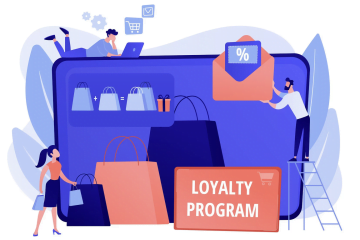
I first tried the Oculus Rift virtual reality headset in the corner of a drab conference room in Las Vegas. I was convinced within seconds – despite feeling a little dizzy – that the device, held together by duct tape and hope, was destined for big things.
A year or so later, I met the same company, Oculus VR, in a (slightly) fancier room at the E3 gaming event in Los Angeles. “Hold this,” I said, abruptly thrusting an audio cable into the hands of a young man who I thought was helping out – but was in fact the company’s chief executive, Palmer Luckey. Again, I was blown away by the technology.
The next time I’d meet Luckey he’d be many, many millions of dollars richer, and Oculus would be a Facebook-owned company. But despite that very real marker of success, our topic of conversation each time we met remained the same: How are you going to convince people it’s worth it? And isn’t it going to be way too expensive?
“It isn’t,” he said the last time I asked him – but he’s wrong.
At around $600 (plus a powerful PC) to get started, it is too expensive.
But money isn’t the problem. The price of the technology will come down, and I’m still convinced virtual reality can be a success – but will it be Facebook’s success? The company’s strategy in this blossoming market is under question.
Best Buy retreat
This week we learned that demo stations set up in Best Buy – the huge US technology retail chain – are being rolled back due to poor foot traffic.
Facebook has described the move as a “seasonal” change, but suffice it to say, if they were shifting units they’d still be there. Instead, 200 of the 500 stations across the US are being shut down.
It’s a potentially troubling moment for the company. Those who back virtual reality – myself included – always subscribed to the view that the key to selling them would be to get people to try it out. Once you’ve been in VR, we all assumed, you’d be hooked, and your wallet would follow soon after.
 Image copyrightGETTY IMAGES
Image copyrightGETTY IMAGESBut that doesn’t seem to have been the case. For whatever reason, too few people were bothering to even try the demo, let alone buy the product. There are a few theories for this, but the most likely, in my mind, was suggested by NPR’s Molly Wood. The problem, she observed recently, might be the “pink-eye factor”.
She said: “It could be as simple as – and I have said this a million times – not wanting to go into a store and put something on your face that has been on a bunch of other people’s faces.”
But that wouldn’t explain why the Oculus Rift is apparently performing poorly against its closest rival.
At the high-end of the virtual reality market, Oculus is up against HTC’s Vive, an extremely capable device which has the involvement of Valve, the revered games publisher.
Good enough
Unofficial data (which I’m using as the companies themselves haven’t shared sales figures with us) suggest that the Vive, despite being more expensive, is trouncing Oculus. Games research firm SuperData estimated that 420,000 Vive headsets were sold in 2016, compared to 250,000 sales for the Oculus Rift.
The lower end of the market is far more positive for Facebook. The Samsung Gear VR runs the Oculus VR experience, and that is by far and away the most popular device for VR on the market today, according to SuperData. But the hardware is all Samsung’s and, for the most part, the headset itself (a simple plastic frame with lenses) has been given away with many smartphones.
The hope that the Gear VR might act as a kind of gateway drug into pricier VR experiences has yet to come to fruition.
Or maybe it has, just not for Oculus: the middle ground in VR is Sony’s PlayStation VR, $399 and works with the PlayStation 4. It’s more powerful than the Gear VR, but less powerful than the high-end headsets. But here’s where Facebook should be worried – it seems to be good enough for most gamers.
And it’s “good enough” that makes Facebook’s strategy all the more precarious. Who is the Oculus Rift for, exactly? Super serious gamers are gravitating to the HTC Vive. Moderately serious gamers are happy with PlayStation VR. And at the budget end, the Gear VR, while popular now, faces a clear and present threat from Daydream, Google’s new VR ecosystem which is far more open.
While Gear VR insists you have a Samsung smartphone, Daydream is designed to eventually work with any sufficiently powerful Android device (and it wouldn’t be too tricky to make it work with Apple’s iOS, either).
This compatibility comes at a price, mind – the Daydream View headset is far less comfortable, in my experience, than the Gear VR. But it’s comfortable enough, and the little handheld controller provides a far more intuitive way of navigating the VR world than tapping blindly at the side of your head, a la Gear VR.
Here comes Hugo
So what are the next steps if Facebook is to get on top of this? I’d ask Palmer Luckey, but he’s hard to reach at the moment – hidden away from public view after controversy surrounding his support of Donald Trump which involved funding a hateful trolling group.
He still works at the company, but Facebook and Oculus have repeatedly refused to tell me what his job actually is. (Palmer, if you’re reading… my Twitter direct messages are open!)
The only public appearance he has made since that debacle has been to turn up in court where Facebook (unsuccessfully) defended against claims Oculus illegally used intellectual property belonging to games publisher Zenimax in the early days. A $500m bill for damages awaits, unless Facebook can win on appeal.
 Image copyrightFACEBOOK
Image copyrightFACEBOOKIn a recent earnings call, Facebook founder Mark Zuckerberg, who is still incredibly enthusiastic about VR and what it means for his network’s future, called for patience from his investors. “It’s not going to be really profitable for a while,” he said.
He’s never claimed otherwise, it has to be said. VR appears on Facebook’s 10-year strategy, a slow burner with potentially big rewards.
But falling behind now would be a serious blow, which is why Zuckerberg has brought in Hugo Barra, a man most recently at Chinese firm Xiaomi, but before that, a major name at Google. He’ll be in charge of Facebook’s efforts in virtual reality from here on in.
In Barra, Oculus gains both a visionary and a safe pair of hands. He having worked on Android, today’s most popular smartphone platform.
At Xiaomi, his role was to help the company expand globally – and while the company didn’t, as some had expected, break into the US under Barra’s watch, it did cement a reputation as making good quality devices.
He hasn’t started his new role at Facebook just yet – he’ll be at the company in a month or so, apparently excited to be back in California after a few years away.
When he starts his first day – I feel those two questions I’ve been asking Palmer Luckey still stand: Isn’t it still too expensive? And more importantly – how are you going to convince people it’s worth it?
[Source:-BBC]



